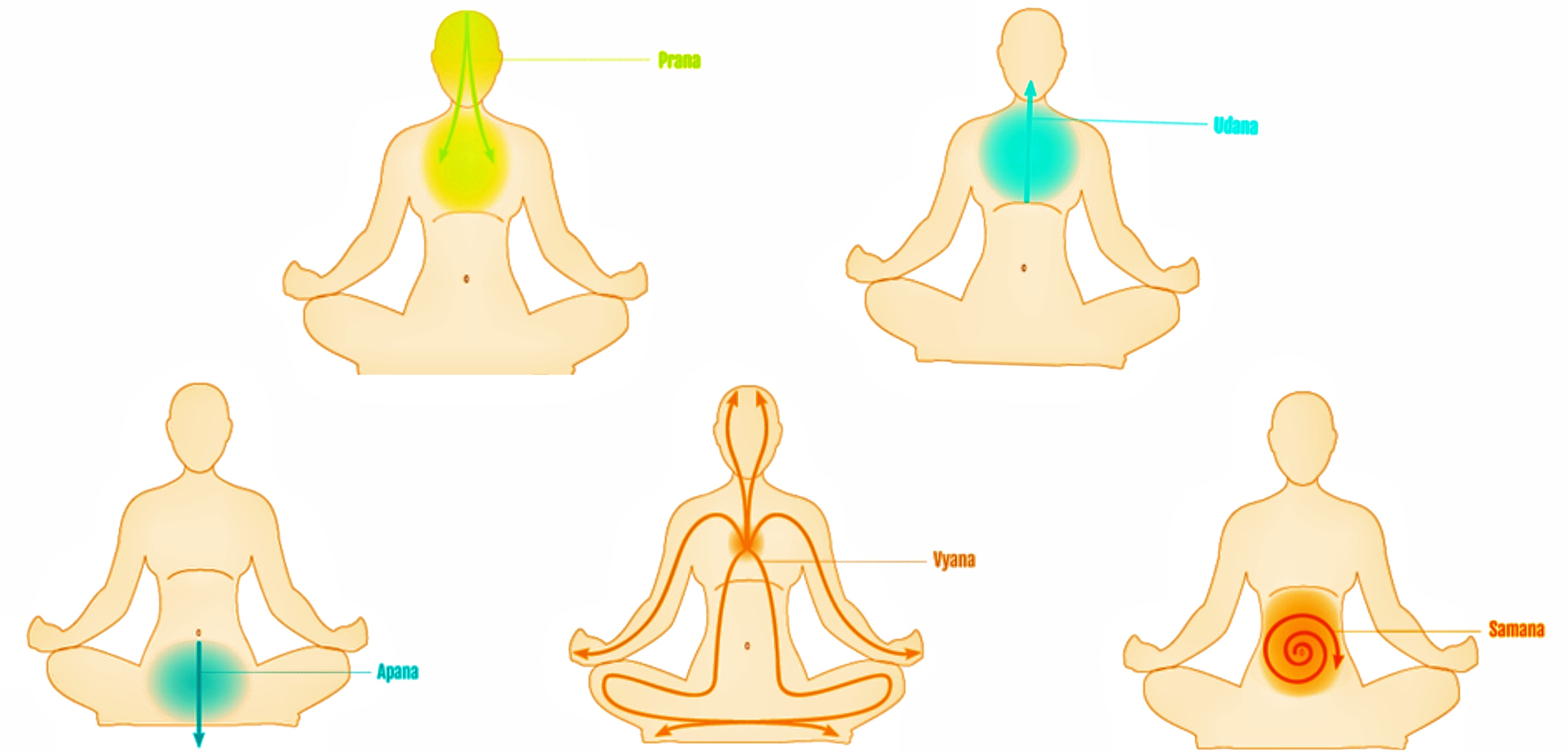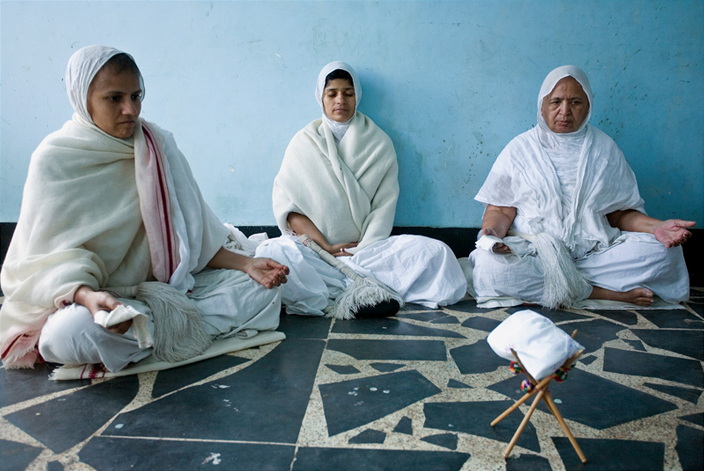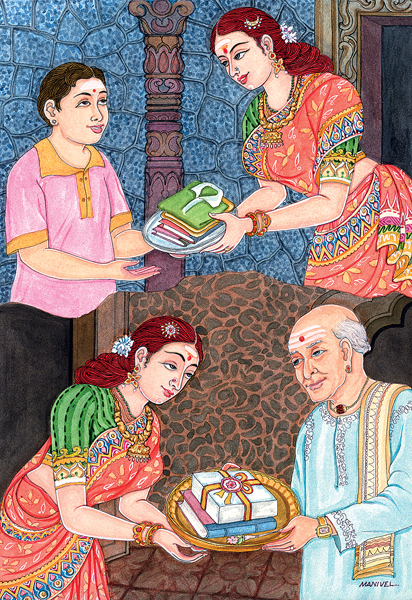|
Kausitaki
The ''Kaushitaki Upanishad'' (, ) is an ancient Sanskrit text contained inside the Rigveda. It is associated with the ''Kaushitaki'' shakha, but a Sāmānya Upanishad, meaning that it is "common" to all schools of Vedanta. It was included in Robert Hume's list of 13 Principal Upanishads, and lists as number 25 in the Muktikā canon of 108 Upanishads. The Kaushitaki Upanishad, also known as Kaushitaki Brahmana Upanishad, is part of the '' Kaushitaki Aranyaka'' or the ''Shankhayana Aranyaka''. The ''Kausitaki Aranyaka'' comprises 15 chapters and four of these chapters form the Kaushitaki Upanishad. Chronology The chronology of Kaushitaki Upanishad, like other Upanishads, is unclear. It is based on an analysis of archaism, style and repetitions across texts, driven by assumptions about likely evolution of ideas, and on presumptions about which philosophy might have influenced which other Indian philosophies.Stephen Phillips (2009), Yoga, Karma, and Rebirth: A Brief History and Ph ... [...More Info...] [...Related Items...] OR: [Wikipedia] [Google] [Baidu] |
Shakha
A shakha () is a Hindu theological school that specializes in learning certain Vedic texts, or else the traditional texts followed by such a school.V. S. Apte. A Practical Sanskrit Dictionary, p. 913, left column.Monier-Williams, A Sanskrit-English Dictionary, p. 1062, right column. An individual follower of a particular school or recension is called a '. The term is also used in Hindu philosophy to refer to an adherent of a particular orthodox system. A related term ', ("conduct of life" or "behavior") is also used to refer to such a Vedic school: "although the words ' and ' are sometimes used synonymously, yet ' properly applies to the sect or collection of persons united in one school, and ' to the traditional text followed, as in the phrase ', (''"he recites a particular version of the Veda"'')". The schools have different points of view, described as "difference of (Vedic) school" ('). Each school would learn a specific Vedic (one of the "four Vedas" properly so-called), a ... [...More Info...] [...Related Items...] OR: [Wikipedia] [Google] [Baidu] |
Brihadaranyaka Upanishad
The ''Brihadaranyaka Upanishad'' (, ) is one of the Mukhya Upanishads, Principal Upanishads and one of the first Upanishadic scriptures of Hinduism. A key scripture to various schools of Hinduism, the ''Brihadaranyaka Upanisad'' is tenth in the Muktikā or "canon of 108 Upanishads". The ''Brihadaranyaka Upanishad'' is estimated to have been composed about 7th–6th century BCE, excluding some parts estimated to have been composed after the ''Chandogya Upanishad''. The Sanskrit language text is contained within the ''Shatapatha Brahmana'', which is itself a part of the Yajurveda#Shukla Yajurveda, Shukla Yajur Veda. The ''Brihadaranyaka Upanishad'' is a treatise on Ātman (Hinduism), Ātman (Self), includes passages on metaphysics, ethics, and a yearning for knowledge that influenced various Indian religions, ancient and medieval scholars, and attracted secondary works such as those by Adi Shankara and Madhvacharya. Chronology The chronology of ''Brihadaranyaka Upanishad'', like o ... [...More Info...] [...Related Items...] OR: [Wikipedia] [Google] [Baidu] |
Brahman
In Hinduism, ''Brahman'' (; IAST: ''Brahman'') connotes the highest universal principle, the ultimate reality of the universe.P. T. Raju (2006), ''Idealistic Thought of India'', Routledge, , page 426 and Conclusion chapter part XII In the Vedic Upanishads, ''Brahman'' constitutes the fundamental reality that transcends the duality of existence and non-existence. It serves as the absolute ground from which time, space, and natural law emerge. It represents an unchanging, eternal principle that exists beyond all boundaries and constraints. Because it transcends all limitation, ''Brahman'' ultimately defies complete description or categorization through language. In major schools of Hindu philosophy, it is the non-physical, efficient, formal and final cause of all that exists.For dualism school of Hinduism, see: Francis X. Clooney (2010), ''Hindu God, Christian God: How Reason Helps Break Down the Boundaries between Religions'', Oxford University Press, , pages 51–58, 11 ... [...More Info...] [...Related Items...] OR: [Wikipedia] [Google] [Baidu] |
Rigveda
The ''Rigveda'' or ''Rig Veda'' (, , from wikt:ऋच्, ऋच्, "praise" and wikt:वेद, वेद, "knowledge") is an ancient Indian Miscellany, collection of Vedic Sanskrit hymns (''sūktas''). It is one of the four sacred canonical Hindu texts (''śruti'') known as the Vedas. Only one Shakha of the many survive today, namely the Shakala Shakha, Śakalya Shakha. Much of the contents contained in the remaining Shakhas are now lost or are not available in the public forum. The ''Rigveda'' is the oldest known Vedic Sanskrit text. Its early layers are among the oldest extant texts in any Indo-European language. Most scholars believe that the sounds and texts of the ''Rigveda'' have been orally transmitted with precision since the 2nd millennium BCE, through Indian mathematics#Styles of memorisation, methods of memorisation of exceptional complexity, rigour and fidelity, though the dates are not confirmed and remain contentious till concrete evidence surfaces. Philolog ... [...More Info...] [...Related Items...] OR: [Wikipedia] [Google] [Baidu] |
Sri Aurobindo Ashram
The Sri Aurobindo Ashram (French: ''Ashram de Sri Aurobindo'') is a spiritual community (ashram) located in Pondicherry (city), Pondicherry, in the Indian territory of Puducherry (union territory), Puducherry. It was founded by Sri Aurobindo after he settled in Pondicherry in 1910. On 24 November 1926 turned over control of the ashram to his collaborator Mirra Alfassa. It houses the ''Samadhi (shrine), samadhi'' of Sri Aurobindo and Mira Alfassa. Governance The Sri Aurobindo Ashram Trust was established in 1955 to administer the community and its assets. Controversy In compliance with the Central Government's Sexual Harassment of Women at Workplace (Prevention, Prohibition and Redressal) Act, 2013, the Sri Aurobindo Ashram Trust constituted an Internal Complaints Committee in April 2014. In 2001, a female member was expelled from the ashram for violating a "mandatory rule". Thereafter she filed charges of sexual harassment against various members. These charges we ... [...More Info...] [...Related Items...] OR: [Wikipedia] [Google] [Baidu] |
Sri Aurobindo
Sri Aurobindo (born Aurobindo Ghose; 15 August 1872 – 5 December 1950) was an Indian Modern yoga gurus, yogi, maharishi, and Indian nationalist. He also edited the newspaper Bande Mataram (publication), ''Bande Mataram''. Aurobindo studied for the Imperial Civil Service, Indian Civil Service at King's College, Cambridge, King's College, in Cambridge, England. After returning to India, he took up various civil service works under the Maharaja of the princely state of Baroda State, Baroda. He became increasingly involved in nationalist politics in the Indian National Congress and the nascent revolutionary movement in Bengal with the Anushilan Samiti. He was arrested in the aftermath of a number of bombings linked to his organization in a public trial where he faced charges of treason for Emperor v. Aurobindo Ghosh and others, Alipore Conspiracy and then released, after which he moved to Pondicherry (city), Pondicherry and developed a spiritual practice he called Integral ... [...More Info...] [...Related Items...] OR: [Wikipedia] [Google] [Baidu] |
Edward Byles Cowell
Edward Byles Cowell, (23 January 1826 – 9 February 1903) was a noted translator of Persian poetry and the first professor of Sanskrit at Cambridge University. Early life Cowell was born in Ipswich, the son of Charles Cowell and Marianne Byles. Samuel Cowell, the printer, was his uncle and Elizabeth "Beth" Cowell, the painter, was his sister. He became interested in Oriental languages at the age of fifteen, when he found a copy of Sir William Jones's works (including his ''Persian Grammar'') in the public library. Self-taught, he began translating and publishing Hafez within the year. On the death of his father in 1842 he took over the family business. He married in 1845, and in 1850 entered Magdalen College, Oxford, where he studied and catalogued Persian manuscripts for the Bodleian Library. From 1856 to 1867 he lived in Calcutta as professor of English history at Presidency College. He was also as principal of Sanskrit College from 1858 to 1864. In this year he discove ... [...More Info...] [...Related Items...] OR: [Wikipedia] [Google] [Baidu] |
Prajñā (Hinduism)
Prajña () is the highest and purest form of wisdom, encompassing transcendental intelligence, consciousness, and deep understanding. Prajñā is the state of insight that surpasses knowledge acquired through reasoning or inference. Meaning The Sanskrit word प्रज्ञा (''Prajña'') is the compound of "प्र (''pra-'')" which prefix means – before, forward, fulfiller, and used as the intensifier but rarely as a separate word and "ज्ञ (''jna'')" which means - knowing or familiar with. प्रज्ञ (''Prajña''), meaning - wise, prudent, knowing, conversant with, is the root of प्राज्ञ (''Prājña'') meaning – wise, learned man, intellectual, clever, intelligence dependent on individuality; प्रज्ञा (''Prajñā'') meaning – intelligence, judgement, mental attitude, particular ''shakti'' or energy, insight, mental disposition, true or transcendental wisdom, awareness, mentality, understanding, Viveka (Discrimination), di ... [...More Info...] [...Related Items...] OR: [Wikipedia] [Google] [Baidu] |
Prana
In yoga, Ayurveda, and Indian martial arts, prana (, ; the Sanskrit word for breath, " life force", or "vital principle") permeates reality on all levels including inanimate objects. In Hindu literature, prāṇa is sometimes described as originating from the Sun and connecting the elements. Five types of prāṇa, collectively known as the five '' vāyus'' ("winds"), are described in Hindu texts. Ayurveda, tantra and Tibetan medicine all describe ''prāṇa vāyu'' as the basic vāyu from which the other vāyus arise. Prana is divided into ten main functions: The five Pranas – Prana, Apana, Udana, Vyana and Samana – and the five Upa-Pranas – Naga, Kurma, Devadatta, Krikala and Dhananjaya. Pranayama, one of the eight limbs of yoga, is intended to expand conscious awareness of prana. Etymology V.S. Apte provides fourteen different meanings for the Sanskrit word ' () including breath or respiration; the breath of life, vital air, principle of life (usually plural ... [...More Info...] [...Related Items...] OR: [Wikipedia] [Google] [Baidu] |
Agnihotra
Agnihotra (IAST: ''Agnihotra'', Devnagari: अग्निहोत्र) refers to the yajna of offering ghee into the sacred fire as per strict rites, and may include twice-daily heated milk offering made by those in the Śrauta tradition. The ritual has been described by P.E. Dumont as a "fertility charm", and as a "solar charm" which symbolically preserved and created the sun at nightfall and sunrise. This tradition dates back to the Vedic age; the Brahmans perform the Agnihotra ritual chanting the verses from the Rigveda. It is part of a pan- Indo-Iranian heritage, which includes the related Iranian fire-worship ritual called Zoroastrian '' Yasna Haptaŋhāiti'' ritual mentioned in the Old Avestan. In the historical Vedic religion, Agnihotra was the simplest public rite, and the head of every Brahmin and Vaishya family was required to conduct it twice daily. It was already popular in India with '' Upaniṣads'' as religious performance. The tradition is now practiced in ma ... [...More Info...] [...Related Items...] OR: [Wikipedia] [Google] [Baidu] |
Tapas (Sanskrit)
Tapas (Sanskrit: तपस्, romanized: tapas) is a variety of austere spiritual meditation practices in Indian religions. In Jainism, it means asceticism (austerities, body mortification); in Buddhism, it denotes spiritual practices including meditation and self-discipline; and in the different traditions within Hinduism it means a spectrum of practices ranging from asceticism, 'inner cleansing' to self-discipline by meditation practices. The ''Tapas'' practice often involves solitude and is a part of monastic practices that are believed to be a means to moksha (liberation, salvation). In the Vedas literature of Hinduism, fusion words based on ''tapas'' are widely used to expound several spiritual concepts that develop through heat or inner energy, such as meditation, any process to reach special observations and insights, the spiritual ecstasy of a yogin or ''Tāpasa'' (a vṛddhi derivative meaning "a practitioner of austerities, an ascetic"), even warmth of sexual intima ... [...More Info...] [...Related Items...] OR: [Wikipedia] [Google] [Baidu] |
Karma
Karma (, from , ; ) is an ancient Indian concept that refers to an action, work, or deed, and its effect or consequences. In Indian religions, the term more specifically refers to a principle of cause and effect, often descriptively called the principle of karma, wherein individuals' intent and actions (cause) influence their future (effect): Good intent and good deeds contribute to good karma and happier Reincarnation, rebirths, while bad intent and bad deeds contribute to bad karma and worse rebirths. In some scriptures, however, there is no link between rebirth and karma. In Hinduism, karma is traditionally classified into four types: Sanchita karma (accumulated karma from past actions across lifetimes), Prārabdha karma (a portion of Sanchita karma that is currently bearing fruit and determines the circumstances of the present life), Āgāmi karma (future karma generated by present actions), and Kriyamāṇa karma (immediate karma created by current actions, which may y ... [...More Info...] [...Related Items...] OR: [Wikipedia] [Google] [Baidu] |





